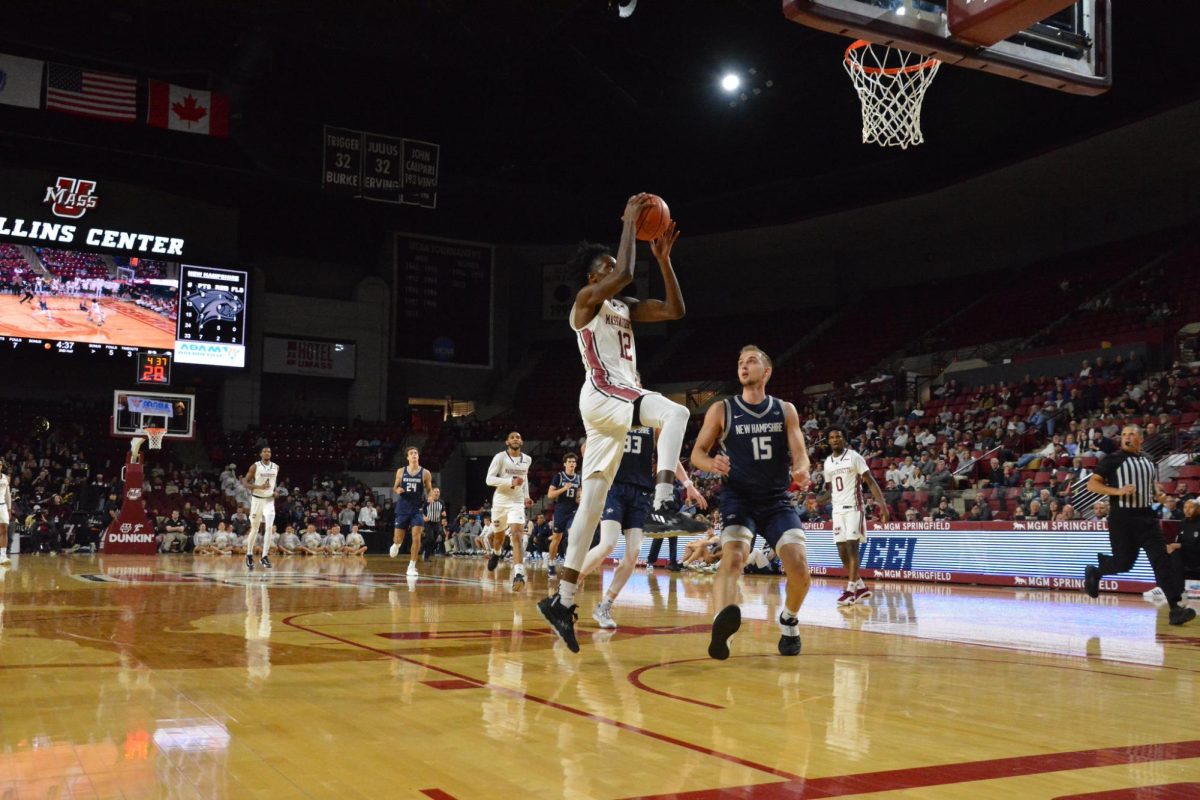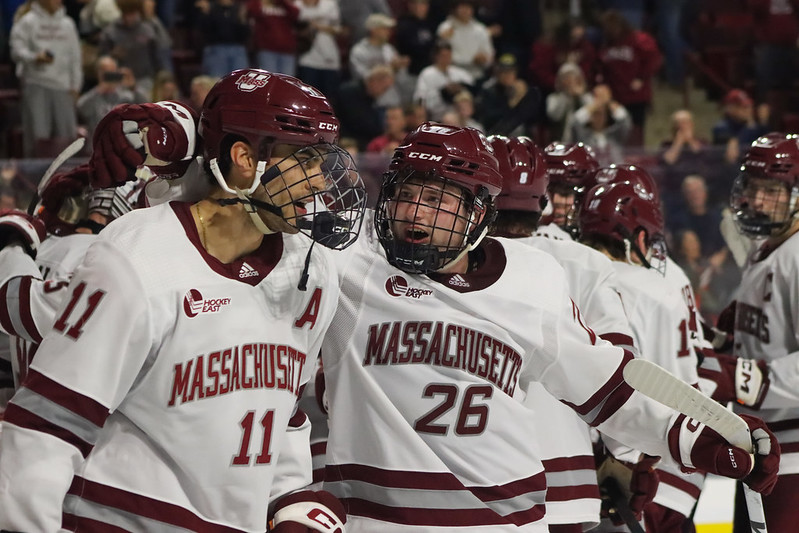The University of Massachusetts evicted 134 residents of Butterfield Dormitory and canceled the Butterfield Dining program in June, following a May 25 spree of vandalism and destruction of property in the building.
Housing Services disbanded the community on June 11 in a letter sent to all returning residents of the building by Director Michael Gilbert. Citing “ongoing episodes of dangerous behavior . . . coupled with frequent incidents of rowdy and destructive activity” Gilbert decided that there was a “need to develop a new and more positive focus for Butterfield’s future.”
The move comes after a series of incidents in and around the building, starting with problems at last fall semester’s Butterfield Banquet, an end-of-the-year celebration sponsored by the Butterfield House Council.
The Banquet, which includes a dinner, show and dance, was frequently followed by an after-party.
“It was so crowded,” Gilbert said. “It was like Mardi Gras.”
“About one o’clock in the morning, somebody pulled a fire alarm. It took us 45 minutes to clear the building,” Gilbert explained. “I think there were high school students there.”
Gilbert says that the incidents he witnessed caused him to be concerned about the building, and led him to impose restrictions on the next Banquet.
On March 27, Gilbert and Housing officials trekked up the hill to discuss these restrictions and his “concerns” with Butterfield residents. Gilbert laid out the conditions under which the next banquet would be held. Guests were to be allowed to the show and dinner only, and no guest would be allowed to stay in the residential portion of the building over night, and there would be no access to the show area from the residential area. Residents wishing to return to their rooms during the show had to leave through the back door and enter the front door, which was monitored by security. Only Butterfield residents were allowed in the front door. The meeting, held at a dinner in Butterfield’s dining area, was met with a response that Gilbert describes as “ballistic.”
The incidents of vandalism increased after that, Gilbert says.
“The more forceful we became,” Gilbert said, “the more problematic the behavior became.”
Gilbert was quick to clarify that “not all students behaved problematically.”
The after-party was also cancelled.
“At the end of the semester, we decided to cancel the after-hours event after the Banquet. We felt that the event the year before had attracted too many people, creating all sorts of potentially dangerous situations,” Vice Chancellor of Student Affairs Javier Cevallos said. “The cancellation of this event was also a clear signal from our part to the residents that we were indeed very serious about what was happening there.”
The problems in Butterfield became clear to the rest of the campus on April 27, when 20-year-old Thomas Degnan, a sophomore natural resources conservation major, fell 35 feet from the roof of Butterfield while attempting to retrieve the Jolly Roger skull-and-crossbones flag, which flew from the top of the dorm as a symbol of the building’s defiance of the administration.
Degnan was on the critical list for four weeks at Baystate Medical Center and discharged to an undisclosed rehabilitation facility, according to hospital officials.
“It’s a tragedy. I’m really concerned about Tom,” Gilbert said. “Its an example of the kinds of tragedy that we can experience if we don’t have safety protocols.”
The vandalism was the final straw though, Gilbert says, although “the tragedy influenced our decision.”
“Thomas Degnan was not part of the decision to disband Butterfield, but it was certainly crucial in bringing to the fore issues of safety in the building,” Cevallos said.
On May 2, Orchard Hill/Central Area Director Diana Fordham sent a letter to Butterfield residents, informing them of the restrictions that would be placed on the spring Banquet. First, Fordham reviewed the reasons for the restrictions.
“Michael Gilbert was present on banquet night last semester and he witnessed many health and safety concerns as well as serious University policy violations,” Fordham wrote. “These violations and concerns include the following: drinking from open containers of alcohol in the hallways, destruction of University property, slow response by students in exiting Butterfield during a fire alarm, broken beer bottles in the hallways and stairwells, and noise policy violations.”
The banquet, with its heightened security, went on as planned with the restrictions on May 11.
However, Housing’s tightening hold on Butterfield resulted, according to UMass officials, in 20,000 dollars worth of damage to the building.
“Instead of getting the message, a group of them engaged in clearly dangerous behavior, vandalism that went beyond anything we could tolerate on this campus,” Cevallos said.
On the night of May 24, one or more vandals ransacked Butterfield, destroying plumbing fixtures, spray-painting walls, breaking windows and disarming and disabling fire and security devices. Replacement, according to Gilbert, of the damaged property would be $20,000, but would cost, with labor, closer to $30,000.
Gilbert saw this destruction as a direct result of the restrictions placed on the Banquet.
“Efforts by Residence Life staff to work cooperatively with members of the current community have not produced perceptible modification of… behavior,” Gilbert wrote in the June 11 letter. These efforts “in fact resulted in acts of extreme vandalism to the building during the last week of spring semester.”
“Tampering with life safety equipment, throwing cement blocks from room windows, setting a couch on fire behind the building, ripping toilet partitions from the walls, painting explicit graffiti on wall surfaces throughout the building and trashing the dining area with litter and broken bottles are some of the examples of this senseless and negative activity.” Gilbert continued. “These are not simple pranks.”
The incident is still under investigation.
“We have some leads,” UMass police chief Jack Luippold said. “We’re still hopeful we’ll be able to identify the individual or individuals.”
By Housing’s estimation, there were some 70 students still in the building at the time of the incident; however, the UMPD were not contacted until the next morning by Residence Life staff. The UMPD has sent out letters to students who were in the building at the time, asking them for assistance. Luippold insists that somebody knows something.
“I find it hard to believe that the residents in the building were not aware,” Luippold said.
“The rest of the residents, to my knowledge, have refused to help in our investigation,” Cevallos said.
Butterfield residents were then removed and scattered across campus.
“Because of the behaviors displayed by some former Butterfield residents we will not place Butterfield residents together in any of the residence halls,” Assistant Director of Housing David Vaillancourt wrote in another June 11 letter to students. “We will, however place existing roommate pairs together in a new assignment.”
Gilbert’s move has drawn criticism from student government leaders, who say that Gilbert has punished the entire building for the actions of a few who may not even be residents. (For more coverage of the SGA/Michael Gilbert conflict please see the story on page 1.)
Gilbert and Housing has also drawn fire from student leaders over the installation of a video surveillance camera on the southern side of the Van Meter cupola, which overlooks Butterfield’s balconies and a portion of the Butterfield roof.
“There has been a history of students choosing to climb up on the roof, and on the balconies,” Gilbert said. “It is connected and it is operable should we determine to turn it on.”
The camera has not, to date, been turned on. The SGA is protesting the fact that student leaders were not consulted or informed of the decision until after it had been made. The decision, according to Gilbert, was made in mid-July, and that there was no opportunity to inform the S
GA until their scheduled meeting last week.
“I mentioned it to them last week when we spoke,” Gilbert said. “I didn’t speak to them earlier because there was not a set date.”
The SGA vehemently denies that this was the case.
“Michael has my phone number, he has [Student Trustee] Jon [Laubinger]’s phone number, and he has [Student Speaker] Aaron [Saunders]’s phone number, he has called us to schedule meetings in the past and to change meeting times. The lines of communication were clearly open, at least on our end,” Sheehan asserted. “In fact, when the Butterfield situation first arose, Jon went to Michael’s office personally to see to it that those lines were open.”
The SGA claims that by not informing or consulting them before placing the camera, the administration violated the tenets of the Wellman Document. Wellman, a Trustee document, states that the SGA has “primary responsibility” over issues of student affairs, and needs to be consulted in matters pertaining to student affairs.
“Its my understanding before any of these actions were taken . . . there should have been prior consultations,” Student Legal Services Director Charles DiMare, counsel for the SGA said. “The idea of completely abolishing a program without student governance consultation violates the Trustee policy.”
President Sheehan says that Gilbert knew the consequences of circumventing Wellman in this and the camera issue.
“He [Laubinger] said to him [Gilbert] that whenever another situation comes to rise involving student issues in which the student voice needs to be heard, the SGA is to be informed of these situations which are specified in Wellman. That was in June. Michael said this would be done. However, when we met last week, he admitted to me that the camera was discussed among the administration since mid-July,” Sheehan said. “For him to say that there was never a time to contact us, which he never did, is absolutely ridiculous and, frankly, untrue. There is a long time period between mid-July and mid-August. Never once did Michael even attempt to include students in the discussion, not once.”
Vice Chancellor Cevallos explained that the camera is there for safety reasons.
“We had been thinking about cameras for sometime as the situation deteriorated. If somebody climbs that roof we will have it documented. One accident is one accident too many,” Cevallos said.
Gilbert offered assurances that the students affected by the camera will be informed if it is turned on. He also states that the work on Butterfield will be completed in time for opening day, and the arrival of 48 Commonwealth College students and 58 Residential Academic Programs students.
Therese Pasquale, the Associate Director of RAP, explained how the building was reprogrammed.
“There was a meeting with Housing and Dean [of Students] Joanne Vanin, and Javier about what to do with the building. He [Cevallos] basically said that this is it, and for me and [Director of RAP] Joe Battista to come up with some plans for reprogramming,” Pasquale said. “There were a few more meetings to go over our plans.”
“After Housing made a decision, they approached us,” Commonwealth College Interim Dean Linda Slakey said. Two ComCol learning communities, focusing on community service, will have part of the building. Some classes will also be held in the building.
Residential Academic Programs will have other parts of the building, and will also hold classes there. Butterfield’s new residents moved in on September 2.
As to Butterfield’s former residents, Gilbert explained, they weren’t necessarily bad students, but something had to be done.
“The thing is, there are a lot of residents who were very good students and residents, and I acknowledge that. It’s really unfortunate when they lose a privilege because of the behavior of other students,” Gilbert said. “It’s not an ideal decision, but it’s the best one.”
Gilbert’s acknowledgement doesn’t suit Sheehan.
“How can they justify not consulting us?” Sheehan asked. “Why did Housing let the situation get that bad?”






